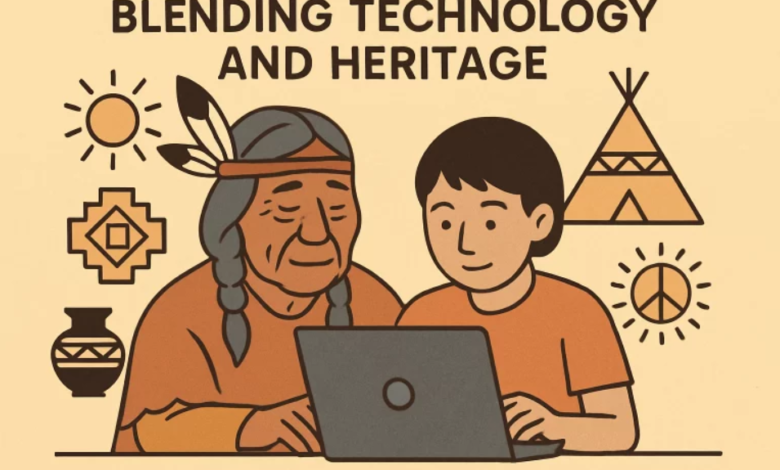How Technology Is Modernizing Tribal Government Software

Introduction
The rapid evolution of digital technology is profoundly transforming how tribal governments operate, communicate, and serve their communities. In recent years, the rise of purpose-built solutions such as Tribal Platforms has set a new standard for how tribes optimize efficiency, enhance data management, and uphold the cultural pillars at the heart of Indian Country. As these solutions become more widely adopted, tribes are witnessing smoother administrative operations, stronger self-governance capabilities, and empowered communities that are more deeply connected both internally and with the outside world. This digital transformation is not merely an upgrade in software – it is a fundamental shift in how tribes shape their futures, navigate opportunities, and protect their interests in an era brimming with promise and complexity.
Embracing these advanced technologies does far more than modernize day-to-day processes—crucially, it acts as a bulwark for tradition and sovereignty that will endure for future generations. The intelligent adoption of innovative tools enables tribes to manage their governmental resources better, accelerate economic growth, and, most importantly, safeguard their most treasured legacies: their people’s welfare and cultural heritage. This careful balance of progress and preservation ensures that modernization remains in harmony with the core values and identities of each unique tribal nation, creating vibrant pathways for resilience and autonomy as times change.
See also: HUZOXHU4.F6Q5-3D – Full Technical Breakdown & Guide
Streamlining Operations with Enterprise Resource Planning
Efficiency and seamless government services have become increasingly crucial for tribal nations seeking to meet the evolving needs of their diverse and growing memberships. Today, many tribes are deploying Enterprise Resource Planning (ERP) systems to centralize and optimize vital tasks that cross departments and service areas. One of the most impactful examples is the Navajo Nation’s recent $31 million investment in an ERP platform, which now serves as the backbone for finance, human resources, and census operations. The benefits of centralizing data flow across government offices are far-reaching: administrative bottlenecks shrink, duplication of effort is reduced, and staff have direct access to the digital tools they need to collaborate effectively and act quickly on urgent needs. By boosting reporting accuracy, ensuring auditing transparency, and speeding up response times for everyday service requests, the Navajo Nation is delivering better and more equitable support to over 400,000 members. This large-scale technology upgrade stands as a beacon of what is possible when strategic investments are made in systems built for the unique needs of tribal governance.
Leveraging Artificial Intelligence for Economic Development
Artificial Intelligence (AI) is another cornerstone of the ongoing transformation within tribal governments. AI-driven tools redefine how tribal nations approach economic development, especially in critical, resource-intensive domains like accounting, analytics, grant writing, program evaluation, and resource allocation. Tribes like Skokomish Indian Tribal Enterprises are pioneering AI automation, successfully reducing manual errors by automating invoice processing and freeing up human talent for higher-level decision-making. AI-enabled analytics platforms provide tribal economic planners with new abilities to uncover trends, examine historical performance, and identify business sectors ready for investment or revitalization. By transforming raw data into actionable insights, AI empowers tribes to make well-informed decisions that improve financial outcomes and advance long-term prosperity. Learn how tribes are using AI for economic development.
Boosting Tribal Capacity with AI
The unique capability of AI to efficiently comb through vast and complex datasets with speed and precision liberates tribal staff to invest their energies in long-term strategic planning and economic innovation rather than time-consuming repetitive tasks. In fiercely competitive arenas such as federal grant applications and multi-million-dollar infrastructure projects, these technological breakthroughs have given tribal governments and enterprises a sharper edge, often leading to increased funding opportunities and wiser investments with lasting impact. The use of AI has become a force multiplier. As tribes continue to explore these cutting-edge tools, they open up new possibilities for growth, resilience, and greater control of their economic future.
Preserving Culture Through Digital Initiatives
Tribal culture and language are living, breathing treasures—and the heart of each nation’s identity, sovereignty, and legacy. For many tribal communities, harnessing digital innovation has become vital for protecting and extending these rich heritages in a rapidly globalizing world. The Samish Indian Nation demonstrates leadership and foresight by digitizing an extensive archive of historical records and language materials, ensuring that wisdom from elders remains available for generations to come. In the digital era, these efforts have enabled tribal youth to access cultural resources from any location, bridging distances and building new connections between scattered members. Digitization shields irreplaceable cultural artifacts from loss or decay and opens them up to interactive experiences, enriched education, and ongoing reinterpretation within the community and beyond. Such initiatives ensure that members—near and far—can engage with their traditions as active, living parts of daily life. Discover how the Samish Indian Nation is preserving culture digitally.
Digital Culture Preservation in Practice
Modern digital platforms enable tribes to collect and safeguard oral histories, develop engaging language-learning apps, and curate living online repositories filled with songs, dances, and records of traditional governance. These digital resources grow richer with every contribution, making culture a participatory endeavor that crosses generational and geographic divides. The creation and sharing of digital cultural assets are helping to bridge the gap between elders and youth, ensuring sacred teachings, values, and tribal stories remain vibrant for all members, which is especially vital for those living far from ancestral lands. Ultimately, this approach supports preservation, cultural revitalization, and IOP pride.
Enhancing Data Sovereignty and Connectivity
Safeguarding the right to control, store, and manage digital information has emerged as a fundamental pillar of tribal sovereignty in the 21st century. The recent inauguration of the Center for Tribal Digital Sovereignty marks a transformational step forward in supporting this goal. Through technical consultancy, digital strategy, and advocacy, this initiative supports tribes as they develop robust digital policies and resilient infrastructures. Given the mounting threats posed by cyberattacks and rapidly evolving technology, having the means to protect sensitive data, ensure autonomous decision-making, and remain connected across often-sprawling or remote tribal territories is now more critical than ever. These efforts advance not just security but genuine self-determination, providing tribes the freedom to shape their digital landscape decisively. Read about the Center for Tribal Digital Sovereignty.
Bridging the Digital Divide
With the development of more resilient and inclusive digital infrastructure and the careful implementation of comprehensive data governance frameworks, tribal nations are taking concrete steps to close the digital divide. Enhanced connectivity supports tribal priorities across the board: education programs can reach more students online, healthcare providers can offer telemedicine to remote families, and entrepreneurs can launch and grow businesses that reflect tribal values. By focusing on digital sovereignty and connectivity, tribes are not strengthening their security and ensuring that every step forward aligns with tribal priorities and individual community needs.
Challenges and Considerations in Adopting New Technologies
Despite the immense promise of digital transformation, tribal leaders face unique and complex challenges in adopting technology. The critical issues of data privacy, cybersecurity, and culturally responsive technology design must be at the forefront of every discussion. Solutions that honor and respect tribal sovereignty—aligning closely with traditional values, beliefs, and protocols—stand the test of time and truly serve the community. Additionally, the long-term success of digital initiatives depends upon adequate training for tribal staff, consistent technical support, and sustained infrastructure investments that ensure evolving needs are met for the present and future generations.
Innovating with Tradition.
Modernization efforts yield the most significant benefits when rooted in thorough community consultation and include active engagement from citizens of all ages and backgrounds. By emphasizing solutions tailored for tribal government, tribal leaders can confidently advance modernization while holding firm to the fabric of tribal sovereignty and cultural identity. This approach ensures that technological innovation uplifts rather than disrupts, building stronger, more self-determined communities for the future.




